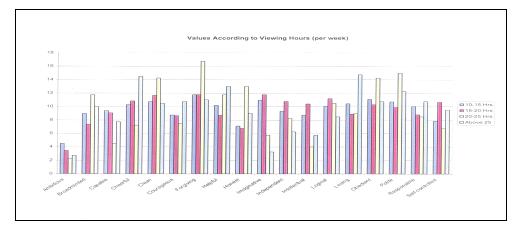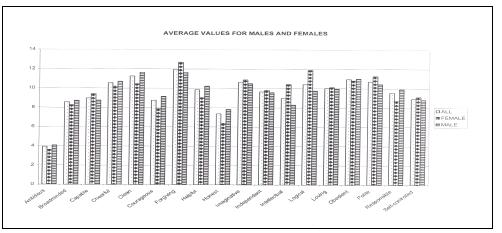Short Description Of Projects
EFFECT OF MEDIA ON
VALUE OF ADOLESCENT
![]()
Submitted By:
Amit Sinha(96038)
Anupam Verma(96060)
Koushik Chakraborty(96116
Course Instructor: Dr. Amit Ray
Project Guide: Dr. L Krishnan
Objective:
The basic aim of our study is to establish a connection between emerging values amongst adolescents and media. It has been known for quite some time that people are affected by media to a large extent. There has been a number of studies conducted in USA and other western countries showing how the violence depicted in media affects the youngsters. We take a slightly different approach and try to find an association between the value systems and different channels shown over TV nowadays.
With the advent of cable network in India, we get to see a lot many programs varying in their content and target audience. Many of these channels and programs are basically meant for adolescents and teenagers. However, it is still uncertain how we are getting affected by these. Our goal in this survey is to make a comparative study ~o see how these are affecting the adolescents.
Methodology
Formation of values in an individual is a complex and involved process. Many aspects play important role in this process. However, once formed these values do not change over a short period of time in general. They do change over a longer period when a person goes through various influences of his/her life. Local environment and parental guidance are two most vital factors in the formation phase. Media too has been proved to playa very crucial role as well.
Ideally, conducting these kinds of studies would require a control group. However, since TV is very much a part of our modem day life, we could not get a group of adolescents without it. Thus, the main stress of our study is on association rather than causal. The major obstacle to using a value survey as a morality measure is the non-pejorative nature of the findings. Value surveys are not constructed to have "right" and "wrong" answers. For example, on the Value Survey Scale, predecessor to the Rokeach Value Survey ,respondents are asked to rank words such as "a world at peace," "national security," "pleasure," "equality," "a world of beauty," "wisdom," and "true friendship".
While these categories could be coded so that "a world at peace" and "equality" would represent moral values, such a construct does not account for a person who may rate "self-respect" and "a world of beauty" as very important, and thus behave in a manner causing no harm to others and even helping others achieve more self-respect and beauty. Ranking values in this manner may indicate different personality dispositions, their intended purpose; but, they do not include a specifically moral or immoral character type.
Along with the Rokeach Scale to evaluate values, we also gave a small questionnaire to the responders to obtain their preferential channels and their approximate time of viewing. This was used extensively to draw out the comparative charts.
Next we sorted out all the responses (about 110) and rejected some incomplete or inconsistent responses. Following which all the data was entered in the database for further analysis. We took various viewpoints to analyze the data, apart from the overall general average. All these are shown as charts in the Result section.


Conclusion
The result showed here shows us a trend of values amongst adolescents in India. This also has shown association of different values with their respective favorite channels available over Cable Network. This in a way points to their effect on them. However, since these values are formed as a result of many interacting factors we cannot stress that these difference are solely due to channels. A case in example is the striking higher priority of values like "Intellectual", "Logical" in case of Discovery Channel viewers compared to over-all average. Though, this is what we can expect from people with fascination of Discovery channel compared to those of say MTV, it will be improper to attribute this single point of difference for the change.
However, the study tells us about the modem trend of values in an explicit manner. It is important to decide whether these are socially acceptable trend and if there is any marked deviation from what is desirable for future society. We see that "Ambitious" ranks very high on priority whereas "Helpful", "Forgiving" ranks way below. This in-effect points to emerging self-centered tendency among people. Moreover, the various associations showed needs to be explored further to ascertain their validity. Only then we can say for certain, that these channels are chiefly responsible in bringing about these changes. Once these are established, it will be possible to put some control on airing various channels so as to ensure that younger generation is not influenced in a harmful manner for future society.